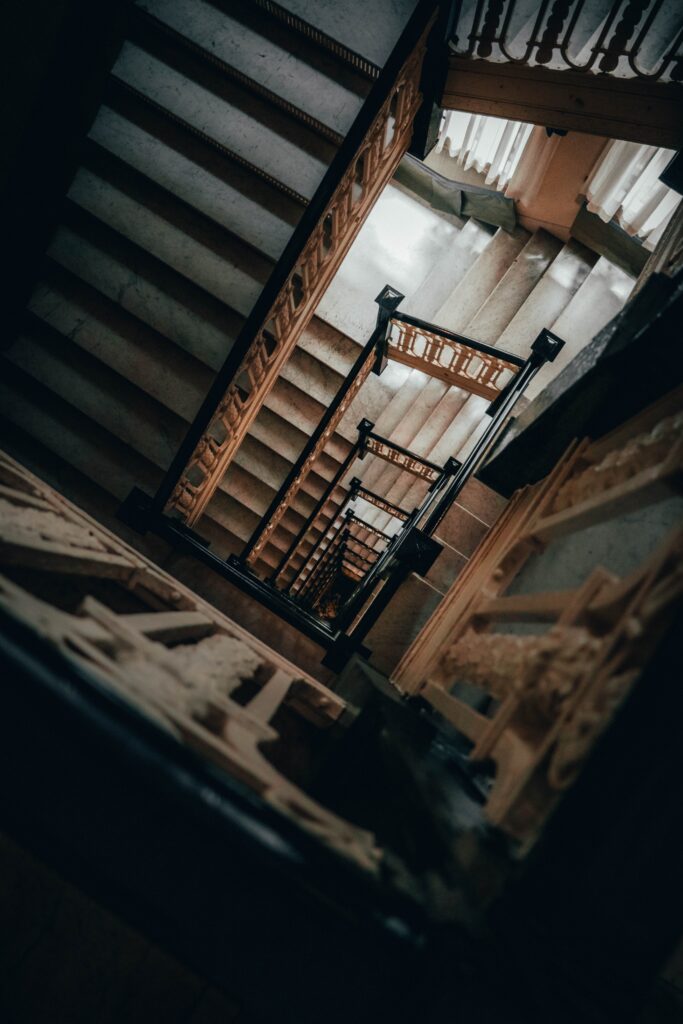The Whitney Museum of American Art is currently showcasing the extraordinary artistry of Harry Smith in an exhibition titled “Fragments of a Faith Forgotten: The Art of Harry Smith.” This groundbreaking artist, known for his work in painting, filmmaking, folk musicology, and collecting, has left an indelible mark on American culture. The exhibition offers a comprehensive representation of Smith’s diverse talents, featuring his paintings, drawings, prints, photographs, and films. His notable contribution to music, the compilation of the “Anthology of American Folk Music,” played a significant role in shaping the sociopolitical climate of the civil rights and Vietnam era. With sculptor Carol Bove’s ingenious design of a film-friendly, black-box-style container, the exhibition transcends traditional museum settings. Visitors can also immerse themselves in Smith’s world through a listening station, where they can experience the power of the “Anthology of American Folk Music” and delve into Smith’s insightful commentary. This captivating exhibition is a testament to the remarkable life and enduring legacy of Harry Smith.

1. Fragments of a Faith Forgotten: The Art of Harry Smith
1.1 Introduction
Harry Smith (1923-91) was a multifaceted artist who left an indelible mark on the cultural landscape. His wide-ranging contributions in painting, filmmaking, folk musicology, and collecting have made him a revered figure in the art world. The Whitney Museum of American Art is currently hosting an exhibition titled “Fragments of a Faith Forgotten: The Art of Harry Smith,” which provides a comprehensive exploration of Smith’s artistic journey. The exhibition showcases his paintings, drawings, prints, photographs, and films, offering visitors a glimpse into the brilliance and complexity of his work.
1.2 Exhibition at the Whitney Museum of American Art
The exhibition at the Whitney Museum is a testament to the enduring impact and relevance of Harry Smith’s art. Curated with meticulous care and attention to detail, the exhibition presents a diverse collection of Smith’s pieces that span his entire career. From his early paintings inspired by indigenous cultures to his experimental films and groundbreaking music compilations, the exhibition offers a comprehensive view of his creative genius. Visitors have the opportunity to immerse themselves in Smith’s world and gain a deeper understanding of his unique artistic vision.
1.3 Sculptor Carol Bove’s Solution
Presenting Smith’s work in a traditional museum setting presented a unique challenge due to the nature of his films. To address this issue, sculptor Carol Bove stepped in and designed a film-friendly, black-box-style container for the exhibition. This innovative solution allows for the optimal viewing and experiencing of Smith’s films, ensuring that visitors can fully appreciate their artistic nuances. Bove’s collaboration with the Whitney Museum has created a seamless integration of Smith’s diverse body of work, allowing audiences to engage with his art in a dynamic and immersive way.
2. Harry Smith: A Multifaceted Artist
2.1 Overview of Harry Smith’s Contributions
Harry Smith’s artistic contributions were not confined to a single medium or discipline. Instead, he explored various avenues of expression, leaving an indelible mark in each field he ventured into. His work in painting, filmmaking, folk musicology, and collecting showcases his multidimensional talent and boundless creative spirit. By seamlessly blending elements from different art forms, Smith pushed the boundaries of traditional categorizations, forging a unique artistic voice that continues to captivate audiences today.
2.2 Influence on Music
One of Smith’s most notable contributions to the world of music is the compilation of the “Anthology of American Folk Music.” This groundbreaking collection brought together a diverse range of folk recordings, showcasing the richness and diversity of American musical traditions. The impact of the anthology was profound, serving as a catalyst for the folk music revival of the 1950s and 1960s and influencing a generation of musicians. Its songs became anthems of the civil rights and Vietnam era, giving voice to the social and political movements of the time.
2.3 Influence on Sociopolitical Climate
In addition to his musical contributions, Harry Smith’s work also had a profound impact on the sociopolitical climate of his era. Through his films and art, he explored themes of outsider-insider culture, material accumulation, and transcendence, creating a platform for critical reflection on societal norms and values. Smith’s ability to blend various cultural, historical, and artistic elements in his work challenged prevailing narratives and encouraged viewers to question established conventions. His art offered a unique perspective on the sociopolitical issues of his time, opening up new avenues for dialogue and cultural exploration.

3. Early Life and Influences
3.1 Encouragement from Family
From a young age, Harry Smith was fortunate to have the support and encouragement of his family in pursuing his artistic interests. His parents recognized his passion for reading, art, and folk music and nurtured his creative talents. Their unwavering belief in his abilities provided a strong foundation for Smith’s artistic journey, instilling in him the confidence to explore new avenues and push the boundaries of his craft.
3.2 Fascination with Indigenous Culture
Smith’s early fascination with indigenous cultures played a significant role in shaping his artistic sensibilities. He became an ethnologist at a young age, immersing himself in the study of indigenous cultures and documenting their songs, ceremonies, and artistic traditions. This deep appreciation for indigenous art and culture served as a wellspring of inspiration for Smith, influencing his paintings, films, and music.
3.3 Work in San Francisco
During his time in San Francisco, Harry Smith further developed his artistic style and explored different mediums of expression. He experimented with painting, creating animated abstractions that showcased his keen eye for color and form. Smith also began collecting various objects, obsessively gathering artifacts that represented aspects of American folk culture. These collections would later become crucial components of his artistic practice, providing source material for his films and influencing his creative process.
4. Move to New York City
4.1 Arrival in New York City
In 1948, Harry Smith made the move to New York City, a decision that would prove pivotal in his artistic journey. The vibrant and dynamic artistic scene of the city provided him with a fertile ground to explore his creative ideas and ambitions. It was in New York that Smith found a community of like-minded individuals, fueling his artistic endeavors and inspiring collaboration and innovation.
4.2 Ambitious Projects and Complex Films
New York City became the backdrop for some of Harry Smith’s most ambitious artistic projects. He delved into creating complex and experimental films, utilizing intricate techniques and unconventional storytelling methods. Smith’s films became a canvas for his artistic exploration, blending elements from different mediums and incorporating found footage, animation, and collage. His unique approach to filmmaking pushed the boundaries of cinematic conventions and established him as a pioneer in the field.
4.3 Challenges of Indigence
While Smith found support and collaboration within artistic circles, he struggled with chronic indigence throughout his life. Financial challenges often forced him to destroy or lose his artwork and collections, making it difficult for the artist to gain the recognition he deserved during his lifetime. Despite these obstacles, Smith’s creative spirit remained undeterred, and he continued to push the boundaries of his craft, advocating for artistic expression and exploration.

5. Highlights of the Exhibition
5.1 Listening Station and the ‘Anthology of American Folk Music’
One of the highlights of the exhibition is a dedicated listening station where visitors can sample the renowned “Anthology of American Folk Music.” This compilation, curated by Harry Smith himself, showcases the richness and diversity of American folk traditions. Accompanied by Smith’s insightful commentary, the listening station provides an immersive experience that allows visitors to delve into the musical world that inspired and influenced Smith’s own artistic journey.
5.2 Unique Style and Themes in Smith’s Films
Another noteworthy aspect of the exhibition is the exploration of Harry Smith’s unique style and themes in his films. From “Film No. 11: Mirror Animations” to “Film No. 12: Heaven and Earth Magic Feature,” Smith’s films showcase his distinctive approach to storytelling and his fascination with outsider-insider culture and material accumulation. By seamlessly blending different artistic elements and incorporating various cultural references, Smith created a visual language that resonates with viewers on multiple levels.
5.3 Magnum Opus: ‘Film No. 18: Mahagonny’
The exhibition also features Smith’s magnum opus, “Film No. 18: Mahagonny.” This ambitious project comprises a collage of color films shot in Manhattan during the 1970s, projected across four contiguous screens. Accompanied by the score of the Kurt Weill-Bertolt Brecht opera, the film weaves together different narratives and visual motifs, offering a compelling and immersive viewing experience. “Film No. 18: Mahagonny” is a testament to Smith’s ability to push the boundaries of his craft and create groundbreaking artistic works.
6. Smith’s Later Years
6.1 Health and Financial Challenges
In his later years, Harry Smith faced significant health and financial challenges. Despite these difficulties, he remained committed to his artistic work and continued to create and collect. These years were marked by a sense of perseverance and dedication, with Smith finding solace and purpose in his artistic practice.
6.2 Continuing Artistic Work and Collection
Until his passing, Harry Smith continued to produce art and expand his collection. His work during this period showcased his resilience and unwavering commitment to self-expression. The continued exploration of new artistic ideas and the acquisition of new objects reinforced Smith’s status as a passionate and dedicated artist, committed to creating and preserving art for future generations to appreciate.
7. Honors and Legacy
7.1 Special Grammy Award
In recognition of his significant contributions to the world of music and art, Harry Smith was honored posthumously with a special Grammy Award in 1991. This prestigious accolade celebrated Smith’s unique and influential role in shaping the cultural landscape of his era. The award served as a fitting tribute to his artistic legacy, solidifying his place in history as an integral figure in American folk music and the arts.
7.2 Passing at the Chelsea Hotel
Sadly, Harry Smith passed away in 1991 at the Chelsea Hotel, where he had been living. His passing marked the end of an era and a tremendous loss for the art world. Despite his struggles and challenges, Smith’s artistic legacy lives on, inspiring future generations of artists and captivating audiences with his unique vision and creative spirit.
In conclusion, the exhibition “Fragments of a Faith Forgotten: The Art of Harry Smith” at the Whitney Museum of American Art offers a comprehensive exploration of Harry Smith’s artistic journey. By showcasing his diverse body of work, the exhibition provides visitors with a deep understanding of Smith’s unique style and contributions to various artistic disciplines. From his early influences to his later years, the exhibition highlights the profound impact of Harry Smith’s art and the enduring legacy he leaves behind.

